Planning a visit to the popular Tirumala Tirupati Devasthanam – Get insights and understand the darshan process.
The Varaha Kavacham (a prayer invoking Vishnu as Varaha swamy-the boar avatar for becoming an armor around us) from the Skanda Puranam says:
आद्यं रङ्गमिति प्रोक्तं विमानं रङ्गसंज्ञितम् ।
श्रीमुष्णं वेङ्कटाद्रिं च साळग्रामं च नैमिशम् ॥
तोयाद्रिं पुष्करं चैव नरनारायणाश्रमम् ।
अष्टौ मे मूर्तयः सन्ति स्वयं व्यक्ता महीतले II
The gist of these shlokas is that there are eight “swayam vyakta” or self-manifested sites of Shree Vishnu. Meaning the murtis here were not sculpted by a god or king or human. These are Srirangam Ranganatha vimana, Srimushnam, Tirumala Venkatadri, Salagrama, Naimisharanayam, Toyadri (Totadri), Pushkar and Naranarayana ashrama or Badrinath.

Tirumala Tirupati Devasthanam Visit
Located at Tirupati, this divya desam (a divya desam is a temple of Shree Narayana that has been praised by Alwars or saint-poets) attracts countless devotees and seekers. “Tiru” means Shree Lakshmi and “Pati” means “Lord”. Similarly “Tirumala” as “Tiru” also means respected and holy – “the holy mountain”. The temple worships Shree Vishnu as Shree Venkateshwara. The meaning of the name “Venkateshwara” is the “Ishwar who cuts away sins”.
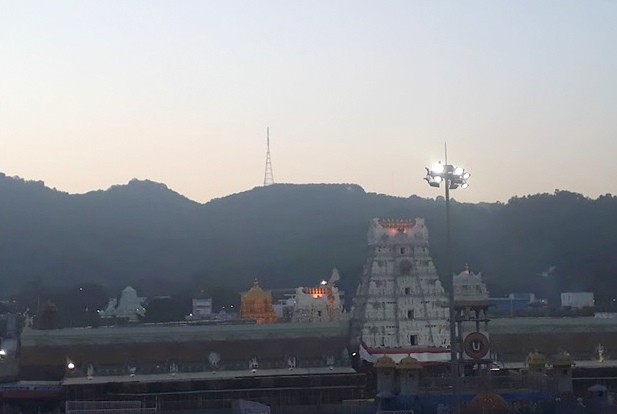

There are seven hills in this Seshachalam range where Lakshmi and Narayana reside (called so after the Ananta or Sesha = snake of Mahavishnu). They are Seshadri, Neeladri, Garudadri, Anjanadri, Vrushabhadri, Narayanadri, and Venkatadri. Hence, the name Saptagiri or Seven Hills. The ghat road (road on the mountain) between Tirupati (the city) and Tirumala (the holy mountain) is known for the “Eparchaean Unconformity”. This is a significant event in the geological history of the Earth.
Holy Water Springs
There are many holy water springs (Teertham) like the Chakra Teertham, Shankhu Teertam, Papavinashanam Falls, Akash Ganga, Kumaradhara waterfalls, etc. The Pushkarini Teertham is just adjacent to the Shree Venkateshwara Swamy temple near to which is the BhuVaraha Swamy temple. This temple has the Murthy of the boar avatar (Varaha). The area is hence referred to as “Varaha Kshetra” as he is located here after his avatar. Tradition says that we should pray to BhuVaraha swamy after bathing/taking darshan of the Pushkarini and then take darshan of Shree Venkateshwara.
“वेन्कटाद्री समम् स्थानम् ब्रह्माण्डे नास्ति किञ्चन, वेन्कटेश समादेवो न भूतो न भविष्यति ||”
“There is no place in this Universe that is equal to Venkatadri; there was and is no god equal to Venkatesha” – Bhavishotara Purana
Do read: Visakhapatnam’s RK Beach or Ramakrishna Beach
Shree Venkateshwara at Tirumala Tirupati
The murti of Shree Venkateshwara is in the “Ananda Nilayam” or the temple of bliss. We see Shankhanidhi and Padmanidhi at the entrance. They are the Nidhi (treasures) associated with Kubera. If not for the Leela of taking a loan from Kubera, we would not have him waiting for us! We then offer our ego at the Balipeetham and see the dwajasthambam (the flag representing our vertebral column). Then enter the Bangara vakili (the golden temple) where Shree Ranganatha (Vishnu who is the Swamy of this “ranga” or stage of the universe) welcomes us. We then enter the Ananda Nilayam and first offer our namaskar to Shree Garuda (the vahana of Shree Hari). And in front is the he who controls the universe.
Shree Venkateshwara Murti’s description
True to the name, one glimpse of the murti of Venkateshwara after hours of tapasya of waiting fills one with ananda! See the feet that are worshipped by countless devatas and rishis. We can see his two lower hands, one in Varada mudra pointing to his feet source of all ananda! His other hand is near the waist (called Katihastam) – he says those who hold on to my feet will not drown in the sea of life. This ocean of existence will only be till their waist! You can see Lakshmi devi on his chest waiting to greet and bless us- her children. See his shankha (Pranava or AUM) and chakra (Sudarshan – good vision) and the glorious mukha (lotus-like face). His Naaman (the mark of Mahavishnu) on his forehead is applied
prominently and is made of pachai karpuram (a type of camphor called burneol).
The chin has a mark of pachai karpuram too. There is a beautiful story of how a devotee called Anantalwar and his pregnant wife were building a garden of flowers for Seva. A boy came to help the lady; angered at the repeated approaching of the boy, Anantalwar chased the boy and hit him with a crowbar. The shocked couple saw Venkateshwara swami’s murti had the same wound on the chin, now bleeding heavily – pachai karpuram was applied for healing. We can see this crowbar at the entrance! This shows his karunya or compassion and love for each of us! The vimana of the ananda nilayam has “Vimana Venkateshwara”, who is a replica murthy of the “moola murthy” or murthy in the garba griham.
Do read: Weekend road trip from Bengaluru – Puttaparti and Lepakshi Temple
Other Temples on the premises
Other temples include Vakula Matha (the mother of Shree Venkateshwara who is Yashoda amma to fulfill her wish of performing his marriage), Narasimha swami, Varadaraja (Shree Vishnu who grants boons), Shree Ramanuja, Hanuman (there are two temples-Bedi and Jabali), Rudra Kshetrapalaka (Rudra as the protector), and Srivari pada (the holy feet). Saptamatrika and Ganesha temples are at the foothills.
Shrines are there for gurus and saints. Like Vaikhanasa Rishi, HathiRam baba (who had the Bhagya of playing dice with Swamy), Mathru Sri Tharigonda Vengamamba (this mother has sung countless songs overflowing with bhakti) and many other such divine tapasvis.
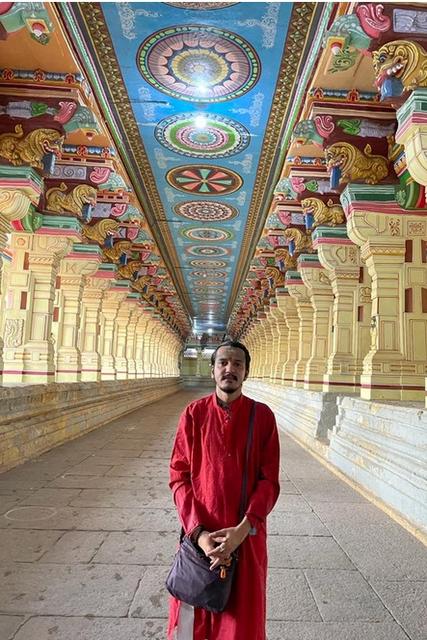

Shree Padmavati, at the Tiruchanur temple, worships the devi with Shree Venkateshwara. She is Alamelumanga (Alar-lotus; mel-on; mangai-lady which means the lady on the lotus) as Shree Lakshmi Devi holds lotuses and is seated on a lotus. Tradition says a seeker should first pray to Padmavati devi. Then climb or drive up Tirumala and take darshan on the hill. So, the order would be first to offer prayers to Shree Lakshmi Padmavati at Tiruchanur. The mother first always, and then the father. Then offer prayers to your Kuladevata, Gurus, Shree Ganesha and Bhuvaraha swamy. Then by their grace, let the eyes and mind soak in the ananda of Shree Venkateshwara Swamy!
Famous Aspects of the Holy Temple
The Tirumala Tirupati temple is famous for many aspects including the famous “laddoo prasadam”, and the “Venkateshwara Suprabatham” (a series of stotras to “wake God up”). Suprabatham -this is actually waking our minds up to his presence within and everywhere! This is followed by his praises in the Venkateshwara Stotram. After which is Sharanagati Stotram where a seeker offers her/himself at the feet of the Lord. Finally, Mangalam that prays for auspiciousness. The hair tonsuring (offering our hair) is a symbol of offering our ego associated with our physical beauty. We offer money in the hundi. This is a lesson of gratitude for giving back what he blessed us with and learning to let go!
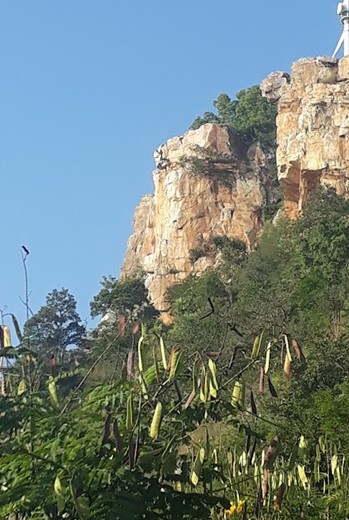

The Bramhotsavam (the annual function or utsavam that was started by Brahma) is a celebration that one must attend. On this occasion, Utsava murthy called Malayappa swamy or lord of the mountains with Sridevi (Shree Lakshmi as wealth) and Bhudevi (Shree Lakshmi as our earth) give darshan in various decorations and vahanas.
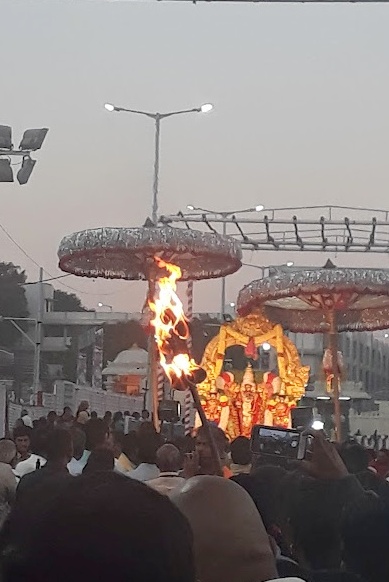

Understand Que system at Tirumala Tirupati Temple
The next time when Shree Padmavati and Shree Venkateshwara call you for darshan – take the “waiting” in the queue as tapasya. Realize that he cuts sins and karmas, which isn’t possible without big austerities. He is showing an easy way. Wait in the queue considering the pushing and pulling as karmic cleansing. Use that time to call out his names in your heart. Inspire others to call his name – Srinivasa (the one where Shree Lakshmi resides), Govinda (the one who lifted Govardhana mountain to protect the cows) and Balaji (the dear one)!
One thing is for sure – See him, offer your worries at his feet and watch his smile change your life!
Do read: Araku Valley Tourist Attractions
Laddoo Prasadam
We conclude this article with a picture of the Laddoo Prasadam. Let us make our tongues sweet with his names and our minds sweet by placing his feet there.
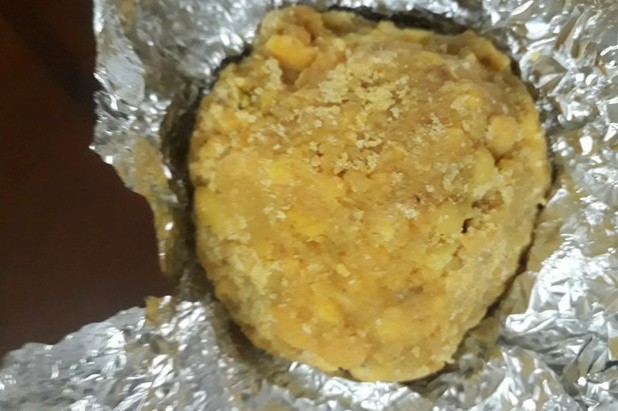

अहं दूरतस्ते पदांभोजयुग्म-प्रणामेच्छयाऽऽगत्य सेवां करोमि।
सकृत्सेवया नित्यसेवाफलं त्वं प्रयच्छ प्रयच्छ प्रभो वेङ्कटेश ।।
Ahaṁ dūratastē padāmbhōjayugma- -praṇāmēcchayā:’:’gatya sēvāṁ karōmi । sakr̥tsēvayā nityasēvāphalaṁ tvaṁ prayaccha prayaccha prabhō vēṅkaṭēśa ।।
I have been far away from your lotus-like feet. Have come with the wish to serve you. Oh, Swamy Venkatesha! Please give me the bhagyam of always doing seva (service) to you.
– Venkateshwara stotram
Author’s Bio:
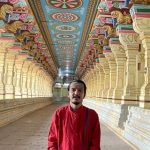

ShivSanjeevi Sripathi is an author/co-author of books on biotechnology/life sciences. These books are in several international libraries. In his free time, he researches and gives talks on ancient Indian practices, temples and systems. This research compiles the science of traditional practices. How to interpret them in today’s context. He has taught and interpreted several mantras and shlokas (free of cost) to a global audience as a service. He has appeared in a TV show on the Hindi Khabar channel on a series of talks covering different temples and customs titled “Bharat ek punah khoj” (2019-2020) (translates as searching again for the secrets of India).
